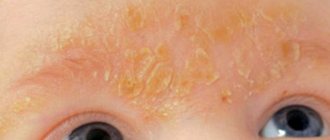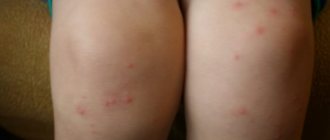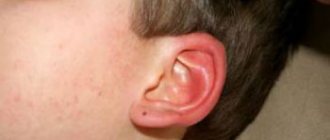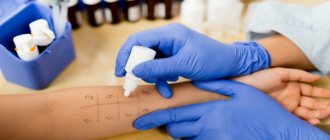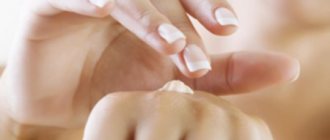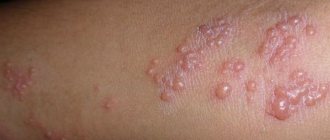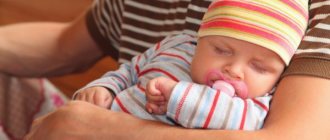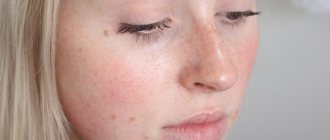As soon as a little man is born, he begins to adapt to new living conditions. In the first minutes of life, the baby will have to get acquainted with the environment and adapt to new factors unknown to him before. This adaptation of the body in some cases is accompanied by a hormonal rash. Parents should know what a hormonal rash looks like in a baby. Photos of this pathology are presented in the article.
Preventive measures
Considering the fact that newborn children have very delicate skin and are susceptible to mechanical damage, allergic, infectious, and microclimatic influences, a very important factor is preventive measures on the part of parents, which will maximally protect the child’s health. To prevent a rash, it is necessary to adhere to the basics aimed at organizing the prevention of such manifestations.
- Compliance with microclimatic conditions. The false idea that warmth for children is the basis of health is often the cause of rashes on the skin: acne, prickly heat and ulcers. In fact, children tolerate a cold environment better than excess heat and moisture, so the optimal temperature in which a child is located is 20-22 degrees.
- Maintaining hygiene rules. Parents should take care of the cleanliness of the baby's skin after feedings (food particles on the chin and cheeks often cause a rash), monitor the secretion of saliva (a frequent phenomenon), and regurgitation. Washing the child after each bowel movement, drying the treated areas with dry wipes, to prevent prickly heat, ensuring free access of air during drying.
- Don't show excesses. In terms of the frequency of bathing a child, the daily norm is considered to be quite enough to complete two procedures, in which the use of soap is not necessary, since detergents remove the protective layer of the newborn’s skin. Wiping away moisture with fabrics or towels is prohibited; you just need to blot all places where moisture accumulates. Excessive use of talc can affect the functioning of the respiratory tract of newborns, so you need to be careful when using the substance when treating areas of the baby’s skin.
- Life Wet cleaning, ventilation and keeping the room clean (especially if there are pets) are an integral procedure for preventive measures against many diseases. The child must be in clean clothes, have a supply of washed and heat-treated diapers and other things.
- Caution against exposure to allergy sufferers. Nursing mothers should know the list of food products that can cause an allergic reaction in newborns and not neglect knowledge to the detriment of the child, using exactly the amount of food ingredients that will benefit both organisms. When processing children's clothes, it is necessary to use detergents that are designed specifically for this purpose.
- Use of vaccines. There are no special drugs for the treatment of viral infections; they usually go away on their own, but the danger of secondary complications can lead to the most disastrous results. Timely vaccination will help develop antibodies in the child’s body that will prevent the development of infectious diseases.
Any manifestations of a rash on a child’s skin are a reason to consult with a specialist to find out the nature of their appearance and possible further treatment with medications prescribed by the pediatrician.
Reasons for appearance
There are many reasons why rashes may appear on the head, face, arms, legs, sternum, back or back of the head. The most likely are:
- Viral diseases. These include measles, rubella, chickenpox, and mononucleosis.
- Diseases of bacterial etiology. For example, scarlet fever.
- Allergy. Food products, hygiene products, clothing, household chemicals, perfumes and cosmetics, and insect bites can cause an allergic reaction.
- Mechanical damage to the epidermis. If the wound is treated insufficiently, irritation of the skin around it may begin, manifested in the form of pimples, white spots, colorless blisters, goosebumps, red or pink spots.
- Problems with blood clotting. In this situation, the rash consists of small hemorrhages characteristic of meningococcal meningitis.
So, rashes in babies come in different types and have different etiologies. It is not worthwhile to independently diagnose and determine the type of rash using photos from the Internet, even with good explanations. This should be done by a specialist.
A rash on a child’s legs requires qualified medical care. Treatment depends on the nature of the pathology. Often, adjusting your lifestyle and quality of life leads to improvements almost immediately. Complex treatment includes eliminating the underlying cause, external manifestations on the skin (local treatment), maintaining good hygiene, and proper nutrition.
Special therapy is prescribed by a specialist. It involves taking antiviral, antibacterial or antifungal drugs. However, most diseases require full child care, diet, and local treatment to relieve inflammation and itching.
Medications:
- age-appropriate antiallergic drugs - they relieve tissue swelling well and reduce discomfort (Fenistil, Erius, Zyrtec, Suprastin, Diazolin, etc.);
- corticosteroid ointments or creams;
- hormonal drugs for external use (Prednisolone, Kenalog, etc.);
- immunomodulators or immunostimulants (used in extreme cases in children after 3 years of age);
- ointments or gels to reduce inflammation and itching, as well as for rapid healing (Fenistil gel, Bepanten, Weleda, etc.);
- antiseptics - if necessary (Betadine, Chlorhexidine, Miramistin).
In addition to drug therapy, it is important to take care of personal hygiene, nutrition, and the environment. You should bathe your baby daily using soft baby products or just warm water (for babies). You need to give up low-quality cosmetics.
It is important to review your household chemicals, especially laundry detergents. It is better to switch to environmentally friendly hypoallergenic brands. The room must be clean. Bed linen, underwear and clothing should be made from natural fabrics.
If the cause of the problem is an allergy, you need to isolate the baby from the allergen, incl. provide a hypoallergenic diet. In other cases, especially with vitamin deficiency, it is important to review the baby’s diet. Good nutrition is important, which includes eating lean meat, fish, dairy products, vegetables, fruits, and cereals.
We suggest that you familiarize yourself with Treatment of brain tumors with folk remedies
Colorless and red, without fever or, on the contrary, accompanied by severe fever, localized throughout the body or only, for example, under the armpits, the rash can be very different. Let's look at why it appears and how it manifests itself, and also figure out which cases are harmless and which, on the contrary, require immediate medical intervention.
When a parent sees that a rash has appeared all over the child’s body, he either turns to the pediatrician or begins to look for ways to treat it on his own. However, there are cases when treatment is not required. In some cases, the rash is completely harmless and goes away on its own. So, when is there no need to worry?
When a baby is born, the world around him is a kind of irritant, because in the womb there was a completely different environment around him.
In some cases, the appearance of a rash on a child’s body is a completely normal reaction of his body to changed conditions.
In particular, the child’s cardiovascular system adapts to new loads. The capillaries are not yet ready for full-fledged work. As a result, redness, which sometimes has a bluish tint, may appear on the child’s face, chest, tummy, back, legs and arms. Physiological erythema appears in newborns already on the second day after birth and goes away on its own after a week. No treatment is needed in this case.
In this case, in addition to redness, rashes appear on the body in the form of small nodules. Bubbles with liquid contents may also appear. Most of the rashes are located under the armpits, on the bends of the arms and legs, on the chest, and on the scalp. This rash appears without fever and does not itch at all, so the newborn does not experience any discomfort.
It also does not require treatment. The only recommendations are as follows:
- after bathing, blot the bubbles with a soft towel, do not rub them under any circumstances, so as not to damage them;
- Give your baby air baths more often so that the rash gradually dries out.
Some doctors advise treating the blisters with a 5% glucose solution.
Newborn acne
In medical terminology, this phenomenon is called neonatal cephalic pustulosis. Many people associate small pimples on a child’s body with poor hygiene, but this is absolutely not the case. In this case, rashes appear due to the fact that a large amount of mother’s hormones are still present in the baby’s blood.
- Do not squeeze these pimples under any circumstances. Scars may remain in their place. In addition, this can cause an infection under the skin.
- Gently blot the rash with a soft cloth soaked in a warm decoction of chamomile or string.
- To dry the rash, you can apply Bepanten ointment to the baby's skin. It is approved for use even in newborns.
- In this case, it is impossible to treat pimples with brilliant green, manganese solution or iodine.
Do not wrap your baby in swaddling clothes. Air baths are better for his skin
Please note: newborn acne may not go away for up to 1.5 months. This is fine. Moreover, acne may appear not in a newly born child, but after he reaches the age of 3 months. In this case, the cause is also hormonal instability. Acne may not go away until the age of 3.
Prickly heat
We also recommend reading: Acne on the back
The so-called miliaria is also a harmless phenomenon that does not require medical intervention. It is a diaper rash that occurs on a child's body due to increased humidity. The only exceptions are particularly advanced cases, when prickly heat is no longer just a rash, but weeping ulcers that are painful for the baby.
Insect bites
Sometimes insect bites can be mistaken for a rash. The child’s immune system is still developing, and the poison released during a bite can provoke an allergic reaction. In some cases, after a child has been bitten by bedbugs, mosquitoes or midges, he may even develop a fever.
Please note: all the cases described above do not require special treatment and do not pose a threat to the baby’s health. However, it is still worth seeing a doctor in order to make sure that the diagnosis is correct. It is very difficult to do this on your own, even knowing the symptoms of each disease. For example, acne in newborns is very easy to confuse with urticaria, and this is a disease that needs to be treated.
We suggest you read: Could there be a rash from nerves?
Rash on the face of a baby
A rash on the face of a baby is a fairly common occurrence that horrifies many parents. There can be many reasons for its development. In addition, different reasons can cause different rashes, but they are localized in the same place.
As a rule, rashes localized on the face of a baby are caused by the formation of hormonal levels. In this case, the rash looks like small pimples, mostly red, which spread to the neck and even to the scalp of the baby.
Quite often, at about 2-3 weeks, a newborn develops pimples that have an abscess in the center.
The next most common cause of a rash on the face (cheeks) of a baby may be an allergic reaction. It is especially common in babies who are breastfed. It occurs as a result of the mother’s failure to comply with the diet or when a crumb of a new product is included in the diet. For example, chicken egg white is a fairly strong allergen. That is why pediatricians do not recommend including it in the diet before 1 year, but giving it exclusively boiled yolk. In addition, a nursing woman is simply obliged to refuse to eat foods with red pigment.
READ ALSO: Essential oils for acne on the face: the most effective composition, methods of use
Quite often, young mothers, due to lack of sufficient experience, dress the baby too warmly, as a result of which he sweats intensely. Due to the fact that his sweat and sebaceous glands do not work stably, a rash appears, which is localized both on the face and on the baby’s head. In addition, prickly heat is often the result of poor hygiene. Therefore, especially in the hot season, the child should take a bath every day.
In rare cases, the rash may be caused by neonatal infantile pustulosis. This disease occurs in approximately 20% of children. It requires drug treatment. Its peculiarity is that pimples do not have a contaminated pore in the center, and quite rarely fester, so a focus of inflammation does not form around them, which only makes them difficult to detect.
With neonatal cephalitic pustulosis, a change in skin relief is observed, which is quite difficult to distinguish visually. It is detected by palpation. In rare cases, reddish pustules form, which are localized in the neck and face of the child.
Prevention plays a big role in the fight against rashes on the face and head of a baby. Therefore, in order to prevent its occurrence, mother must adhere to the following rules:
- Wash your baby daily with clean boiled water. For such manipulations, you can also use solutions of string and chamomile, which have antiseptic properties.
- Constantly maintain the physical parameters of the air in the room at an optimal level: temperature 18-21, humidity up to 70%.
- Follow a hypoallergenic diet if the child is breastfed.
- If a large area of the face is affected by a rash, you should definitely see a doctor.
- As a rule, if a rash appears in a child, you should not use antihistamines, alcohol solutions (brilliant, calendula), potassium permanganate solution, hormonal ointments, or antibacterial drugs.
Thus, by observing all the above rules, the mother will independently be able to prevent the development of a rash in the child and prevent its spread
It is worth remembering that before using any means, it is important to consult with a dermatologist, who, if necessary, will prescribe competent treatment.
What to do if your child has a rash?
It is enough to maintain hygiene and additional treatment of the affected areas.
Despite this, if any rash appears on a child’s skin, it is necessary to understand whether the baby has other symptoms that indicate an infectious disease. The nature and location of the rash should also be assessed. After an independent examination, you need to show the child to a doctor or call him at home so that he can prescribe treatment, if required. If an infection is suspected, the baby must be isolated from others until the doctor arrives.
A rash on the body of a newborn is a pathological part of the skin or mucous membranes that is distinguished by color or texture. This is a collection of blisters, blisters, pimples that appear on a red background or on the site of an old rash. This criterion is important for making a diagnosis.
A newborn baby may develop small white dots on the face. There is no need to worry about this - after a few days there will be no trace of them.
What could a rash cause in a baby? The skin of a newborn or infant is a very sensitive organ, so a rash in a baby can appear in response to literally any impact. In particular, its reasons may be the following:
- Food allergies. If the baby is breastfed, a reaction may occur to foods consumed by the mother.
- Taking drugs intolerable to the body.
- Skin touching an irritant.
- Diaper dermatitis.
- Prickly heat.
- Hives.
- Neonatal variety.
- Infectious variety.
Only a doctor can correctly determine the source of the rash and give detailed explanations about how to treat a rash on the arms, cheek or throughout the body. To begin with, you can trace what is affecting the child to rule out an allergic, drug rash or contact dermatitis. The most dangerous option is infectious, which can also manifest itself in life-threatening diseases.
Rash on the face and head of a baby, what to do
After examining the child by a specialist and finding out the cause of the rash, the parents’ task is to provide all possible conditions to eliminate the rash on the head, face and other areas of the skin. It is enough to adhere to the basic rules of child care and basic hygiene. During the reception, or at special courses organized locally, specialists must explain in detail the essence of the activities and the technique of their implementation.
- Objects and substances that can cause an allergic reaction in a child should be completely excluded from all types of contact with the newborn.
- Before performing procedures and when communicating with a child, it is necessary to adhere to the rules of personal hygiene: wash your hands as often as possible with plain soap, do not use cosmetics that can cause allergic reactions in the child.
- All household items that the child comes into contact with during play must be constantly treated with hygiene products.
- The bathing procedure should end with careful removal of moisture from all parts of the body by blotting.
- The areas affected by the rash must be treated with medications prescribed by the doctor, according to the instructions for use of the drug.
- When putting things on your child, you should first make sure that they are clean and have been heat-treated after washing.
- Avoid hypothermia and overheating of skin areas.
- Make sure you select the correct items of clothing for walks and active games.
Correct and timely help from parents will help get rid of rashes and prevent their recurrence. Experts recommend using folk remedies to prevent skin irritation and the appearance of rashes by adding a weak solution of potassium permanganate or a decoction of medicinal herbs to the water while bathing. During games and active movements, do not restrict the child’s movements with clothing, ensuring proper air circulation in all parts of the body.
What not to do if a baby has a rash
When a rash appears, parents often repeat the same mistakes, which not only do not help the child get rid of rashes on the head, face and other areas of the skin, but on the contrary, the problem only gets worse. When treating rash-affected areas, the following actions should not be performed:
- Before examining a specialist, do not treat the rash with iodine, brilliant green and other dyes that make diagnosing the disease difficult.
- Violate the integrity of the bubbles.
- Squeeze, pick off pimples.
- Wipe the affected areas with alcohol lotions and hygiene products that are not intended for caring for a child’s skin.
- Interfer with prescriptions prescribed for the treatment of rash by a doctor, replace drugs with others without prior approval from specialists, and refuse to perform procedures.
- Without a preliminary diagnosis of the disease by a pediatrician, begin treatment of the child independently.
What not to do for neonatal rash in a newborn
A concerned parent, seeing any rashes on the baby’s skin, wants to help the child. At this moment, the main thing is not to cause harm and to know what should be done for hormonal rashes in newborns, and what to refrain from:
- Do not apply hormonal ointments to the rash;
- treat the skin with greasy ointments and oils;
- lubricate areas of inflammation with alcohol solutions: iodine, brilliant green, etc.;
- rub acne with herbal infusions;
- treat the newborn with antibiotics;
- give the baby antihistamines;
- use adsorbent medications;
- Sprinkle talcum powder or baby powder on pustules.
All of the drugs and remedies described above can disrupt the natural hormonal development of the child. You will not be able to benefit from special products and may cause serious harm. If the newborn does not have a fever, is not in danger of overheating, has an appetite, and does not show signs of an infectious pathology, then after 3-4 weeks all signs of a hormonal rash will go away on their own without leaving a trace.
Treatment
In the treatment of acne, you should not use drugs that fight pathologies on the facial skin. They will be ineffective, the person will waste his money. The most correct development option would be to contact a dermatologist who can prescribe effective therapy. You should not wait for a purulent pimple to appear; an adult, unlike a teenager, should not be embarrassed by the appearance of a rash on the head and consult a specialist as soon as possible at its first manifestations. Only a doctor can help you get rid of painful pustules or acne in a short time.
If a person does not have the opportunity to see a dermatologist in the near future, he can use several proven treatment methods as therapy.
- Antibacterial ointments help to cope with pathology in the hair on the head. Today, the most popular are Zinc ointment and Salicylic ointment. They help fight various bacterial manifestations and prevent the spread of infection.
- Camphor alcohol and tar are often used to treat the scalp. They are convenient to use if the rash is localized on the back of the head. There is a minimal risk of the product getting into your eyes. Camphor and tar have an exfoliating and antibacterial effect.
- With prolonged development of pathology, dermatologists may prescribe antibiotics. As a rule, they are used for extensive acne on the scalp in the hair. The drugs Ofloxacin, Doxycycline, Ceftriaxone help get rid of acne.
- Sorbents are also necessary to rid the body of harmful substances that have accumulated over time. Perhaps they are the reason that a person develops acne. Medicines such as White Coal, Enterosgel, Smecta will help.
- Dermatologists recommend using lactobacilli in combination. These may not even be special preparations, but homemade yogurt on a natural basis. They help improve the condition of the intestines, the work of which, in turn, affects the condition of the scalp and hair.
We must not forget that therapy aimed at removing acne must be comprehensive. Ideally, the patient should take all types of drugs that have an antibacterial, anti-inflammatory, drying and sorbing effect.
Urticaria - what factors cause this type of rash, how to determine
Another manifestation that may appear on the delicate skin of children is urticaria. The photo shows in detail that this is a rather serious problem that requires immediate medical intervention, especially if it concerns infants. The disease usually looks quite scary - with light red spots and numerous large blisters. The formations cause severe itching, which leads to irritation of the baby, frequent crying, problems with sleep and moodiness. It’s even worse if a child begins to tear this manifestation with his nails - this threatens with wounds and abrasions, which, in turn, can become inflamed and even infected.
Usually the cause of the appearance of these formations is a mother who actively consumed foods or dishes prohibited during breastfeeding:
- spices;
- citrus fruits;
- food additives;
- strawberries;
- whole milk;
- cheeses;
- natural honey;
- eggs.
The first thing parents should remember is that they should never try to treat these rashes on their own. Only a physician can determine what exactly caused the manifestation of these formations and advise the best treatment options for the child.
Giant urticaria, which can lead to swelling of the baby’s larynx, is considered especially dangerous. Here the count can go on for minutes, so parents, if they detect inflammatory processes on the mucous membrane of the baby’s throat and severe swelling, which is visible on the neck even with the naked eye, should immediately call a doctor.
Watch the video of what Dr. Komarovsky thinks on this topic:
So that you are never taken by surprise by a rash on the neck of a baby, a photo with explanations will help you understand these manifestations and know when you should wait a little, and when it is better not to hesitate to see a doctor. There is no need to treat rashes carelessly - some of them can lead to irreversible processes in a small body. Do you think all the topics in the article are covered? Or could there still be some kind of rash on the child’s neck? Leave your review on the forum about the rash on your baby’s neck or read how our visitors dealt with it.
Sudden changes on the skin are called a rash. There are many diseases in which it necessarily occurs, and even more in which it may or may not occur.
If a rash appears on a baby's neck, it is most likely neonatal acne or heat rash, but sometimes the cause of the rash is much worse. Let's figure out together when you need to panic, and when you should still wait.
What types are there
In a one-month-old baby and an older baby, the clinical picture is different, which depends on the type of rash. The main types of acne on the face and head are presented in table form:
| View | Short description |
| White | They are small in size and resemble a small grain |
| Localized under the upper layer of the epidermis | |
| Are a consequence of blockage of the sebaceous gland | |
| More often recorded in children during adolescence | |
| Reds | Nearby skin also turns red |
| If an inflammatory process occurs, the pimples become filled with pus. | |
| Blackhead | Located near the epidermis |
| Rarely cause itching and other unpleasant symptoms | |
| Large pimple with purulent fluid | Always accompanied by pain |
| In advanced cases, the child may have hair coming out on his head. |
READ ALSO: Cleaning your face from acne and blackheads at home: a step-by-step guide
Other reasons
Infections, allergies, diaper rash are not the only reasons why a baby may have rashes on his neck. Ringworm often appears behind the hair, psoriasis is localized behind the ear, pimples on the face, chest and shoulders can be a diathesis. The table provides information on other reasons that cause rashes in children of different ages:
| Disease | Characteristic |
| Newborn acne | In the first days after birth, under the influence of hormonal fluctuations in the mother’s body, the baby experiences active secretion of the sebaceous glands. Clogged pores provoke inflammation. |
| Diathesis in infants | A scattering of small pimples that peel and itch. Diathesis can be caused by dysbiosis, acclimatization, vaccination. |
| Guttate psoriasis | Most often appears on the neck. The etiology is still unknown. Sometimes the disease is triggered by stress, sunburn or taking certain medications. |
| Lichen simplex chronicus | Localized on the back of the neck. Formed due to scratching and rubbing of clothing. |
Why do acne appear on the scalp?
Acne can appear for completely different reasons, which will be in the nature of an external or internal factor. The disease can occur in any person, regardless of gender and age.
Dermatologists today identify several reasons leading to the development of acne on the head:
- Overactivity of the sebaceous glands. When they function excessively, a person’s scalp pores become clogged. Particularly susceptible areas are those where there is hair. Hair grows from a follicle, which can become inflamed due to overactive glands.
- Hormonal disbalance. Here it is worth distinguishing between endocrine disorders in women and men. Since in the first, acne on the head may appear as a result of menstrual irregularities during pregnancy. In the second, there is a sharp decline in testosterone levels.
- Violation of personal hygiene. According to the advice of cosmetologists and dermatologists, it is recommended to wash your hair at least once a week, unless a person experiences daily physical activity that leads to increased sweating. If you have a job that requires physical activity, you should keep your hair clean 3 times a week.
- Improper scalp care. The rule that hair must be washed every day or every other day is considered incorrect. This disrupts the natural production of sebaceous glands, which are designed to protect the head from dryness. Since the natural fat layer is removed, the glands begin to work harder, which leads to their hyperactivity.
- Wrong selection of shampoo. Even this factor can cause the development of acne on the head. If the hair washing product is chosen incorrectly, it can cause irritation of the skin, lead to dryness or, on the contrary, excessive oily deposits. You need to know your hair type to make the right choice of shampoo.
Skin microtraumas often cause acne to appear. It is possible to injure the scalp even with a comb or by constantly scratching the skin with nails. This phenomenon is not uncommon when dandruff appears. It begins to cause severe itching and as a result of constant microtrauma, acne appears.
Bad habits such as consuming nicotine and alcohol can lead to acne on the scalp. Constant stress and overexertion affect the well-being of the entire body, including the condition of the hair and scalp. The reason that a rash appears may be wearing a tight headdress. It creates minor mechanical friction, which leads to skin irritation. Acne is sometimes the body's reaction to an allergenic product eaten or a hat that was washed with low-quality powder. Due to allergies, a rash appears on the skin. With prolonged treatment, it can develop into pustular formations. Taking steroids. Colds and hypothermia affect the condition of the skin. When a person eats excessive amounts of sweets, he may develop acne
Fast-burning carbohydrates often lead to dysfunction of the skin. Disturbance in the functioning of the adrenal glands. It is worth paying attention to the bedding that a person uses. If it is made of synthetic material, this may well be the reason; A skin rash often occurs as a result of a malfunction of the intestines.
Therefore, it is worth trying to carefully consider your diet. Perhaps there is a lot of junk food, which doubles the work of the organ. Seborrheic dermatitis of the scalp.
Types of rashes in babies
Allergy
The allergy may be similar to neonatal erythema and acne. However, it can always be distinguished by certain characteristics:
- An allergic rash always itches. The baby becomes noticeably more restless: constantly tosses and turns from side to side, sleeps poorly, and cries.
- The child may refuse to eat.
- He may have bowel movements.
A rash on a child's back may be a symptom of an allergy. To determine an accurate diagnosis, consult a pediatrician
A food allergy can appear on any part of the body, and a contact allergy can occur in the area that came into contact with the allergen. For example, if your child has an intolerance to the washing powder you use, a rash will appear where they came into contact with the washed fabric. If the child is constantly lying down, it will be the shoulders, shoulder blades, lower back, buttocks, hips.
Most often they are accompanied by increased body temperature, general weakness, and drowsiness. If you notice these signs, call your doctor. The disease may be contagious, so you should not go to the hospital in person.
Please note: with infectious diseases, at first only a fever may appear, without a rash. Rashes can occur only towards the end of the day when the child feels weak. If you have measles, the rash may appear only on the fifth day after the fever rises.
Traditional childhood illnesses that cause a rash to appear on the body
Among the most common infectious diseases is the well-known chickenpox. Less common diseases are measles, rubella and scarlet fever, which is the most dangerous on this list.
No less dangerous are the so-called erysipelas, the development of which occurs due to infection with streptococcus, and meningococcal infection. In the absence of proper medical intervention, they can result in serious complications.
In the presence of these diseases, the rash is located throughout the body. Rashes can also be local. So, red blisters on the lower back or a rash on the stomach of a child may be a manifestation of the herpes zoster virus. You can learn about these and other cases when a rash appears along with a fever from this article.
The rash due to the herpes zoster virus in this case affected the chest, armpits, and arm
A rash in a child can be a manifestation of dermatosis, psoriasis, eczema, mycosis and other skin diseases. In this case, regular baby cream will definitely not help with peeling. This requires complex treatment with several types of medications.
Please note: psoriasis and eczema almost never occur in newborns. Hereditary predisposition, as a rule, appears only after the child reaches 2 years of age.
Often the rash is absolutely not dangerous, but to make sure, you need to visit a doctor
We invite you to familiarize yourself with the causes of acne on the back, shoulders, and chest. Acne on a woman's shoulders and back: causes and treatment
In dermatology, there are three large groups into which all possible skin rashes in infants are divided:
- Physiological. This type of rash occurs in newborns. Rashes appear on the body as a result of hormonal changes occurring in the body.
- Immunological. It is a consequence of exposure to various irritating factors on the epidermis, such as allergens, temperature or friction. Such rashes include urticaria, prickly heat, an allergic reaction, or atopic dermatitis. Violation of basic hygiene rules can also lead to unwanted manifestations.
- Infectious. A rash is a symptom that accompanies a certain infectious (viral) disease, for example, chicken pox or scarlet fever (more details in the article: how is an infectious rash in children with viral exanthema treated?).
Advice from Dr. Komarovsky
As we have already said, no special treatment is required for acne in a newborn, but there are some nuances that Evgeniy Olegovich recommends that all young mothers learn and learn.
- Squeezing pimples on a baby is strictly prohibited! Firstly, it hurts, and secondly, pathogenic bacteria can get into the wounds and cause an inflammatory process. Then, in place of such “complicated” wounds, ugly scars will remain, which are no longer possible to get rid of.
- If parents use cosmetics for children, they should be labeled “From the first days of life.” There is no need to burn acne with brilliant green, iodine, alcohol or alcohol-containing solutions. Antibiotic ointments are also prohibited. and even regular baby cream, because it’s quite greasy. Don't try to solve the problem with powder, it's useless. If there are a lot of rashes, you can use zinc ointment or Sudocrem; they effectively “dry out” the pimples.
- If the acne does not go away for a long time, the rash becomes larger and more and more areas of the baby’s face are covered with it, be sure to consult a doctor. Such pimples may not have a hormonal root cause, but an infectious one.
- A mother who is breastfeeding should worry less so that the stress hormone cortisol does not enter the milk. It also contributes to the appearance of skin problems in the child. In addition, a nursing mother should reconsider her diet.
- A child with newborn acne needs sun and air baths and hardening. In the warm season, a baby with problem skin should be outdoors more often. Phytotherapy is acceptable - bathing in water with the addition of a decoction of chamomile and string. You can wash your baby with chamomile several times a day, avoiding getting the decoction in the eyes, nose and ears.
- With the right approach, according to Evgeniy Komarovsky, acne goes away without a trace on its own in a fairly short time - from several weeks to 3 months.
Miliaria neonatal
Very often, neonatal acne is confused with miliaria. This is a consequence of a violation of thermal exchange, when the child is not dressed for the weather (heavily wrapped up), is not bathed every day, does not take care of the skin in general and folds in particular, the room is too warm and dry, etc.
Rashes on the baby’s neck and entire body occur in situations when the child begins to sweat, but since the sweat glands also do not work well enough, the skin becomes irritated.
There are several types of sweating:
Most often occurs in infants and children up to six months. Individual pimples with a red halo appear in places where heat transfer is difficult - folds, groin, armpits, neck, elbow and knee bends. For a baby, such a rash, especially on the neck, is very painful, and measures must be taken immediately to remove it.
Miniature whitish papules merging into large spots. Appear on the face, neck, chest, inner thighs. When they burst, they dry out quickly, leaving small pigmented areas. The baby is not bothered, does not itch or hurt. They usually go away in 3-4 days without any intervention.
It is more commonly called instantaneous miliaria of the newborn. It appears literally a couple of hours after the child sweats. The papules are small, do not differ in color from the skin, and the surface is slightly rough. As soon as the heat transfer is adjusted, they immediately disappear.
So, it becomes clear that the hardest thing for a baby is prickly heat. The following actions will help you get rid of it, or even better, prevent it:
- The child should take water treatments every day - a bath with a soothing decoction is ideal. Afterwards, do not wipe, but dry with a towel, paying attention to each fold. You can lubricate it with oil and treat it with powder 2-3 times a week.
Since very often, due to poor hygiene, a rash appears on the baby’s neck, even during the day, if it is hot or stuffy, you can gently wipe these folds so that they are dry.
- For a walk, don’t bundle up as if you were going on a week-long hike to Kamchatka. The child must be dressed the same as the parent + 1 clothes. Most often this is a cotton bodysuit.
- In the room with the crib, the temperature should not exceed +20°C, and optimal humidity should be ensured. Some people buy steam generators for this, others put bowls of water. The choice is yours. But do not forget to wet clean the room every day and ventilate it before going to bed.
Rashes in a newborn baby
As a rule, in the first weeks of their child’s life, parents encounter the following types of rashes on their child’s skin:
- Acne of newborns. These are inconspicuous white pimples, the appearance of which is physiological in nature. According to statistics, a third of children experience such rashes in the first weeks and months after birth. As a rule, white pimples that appear on the face, scalp and neck of a newborn do not require any special treatment or medication. Since they do not have a comedon - a clogged pore, under normal conditions they practically do not become inflamed and do not fester.
According to experts, the cause of this kind of acne is an excess of maternal hormones in the baby’s body. As soon as the child’s hormonal levels return to normal (on average 1-3 months), the acne will disappear on its own. During the period of hormonal rashes, parents are required to do only one thing - keep the baby’s skin dry and clean.
- Acne covering large areas of the skin. This type of rash can be identified by the red base and white tip of the pimples. Whitish-yellow pus accumulates under the skin. As a rule, acne appears a week after birth and can remain on the skin for almost a month. This problem arises due to the active functioning of the glands. If the rashes do not cause discomfort to the baby (they do not itch or itch), and no inflammatory processes are observed, then parents do not need to worry about them, everything will go away and not a single trace will remain.
- Milia is another type of rash that is quite common in newborn babies. As a result of the accumulation of secretions in the sebaceous glands, or in other words, blockage of the sebaceous ducts, small white dots appear on the baby’s face, which eventually disappear on their own without any treatment. These pimples should not be squeezed or picked off, as this can cause infection and thereby provoke an inflammatory process.
All of the above types of rashes are typical only for newborn babies; they are not contagious and, subject to certain hygiene rules, go away on their own without drug treatment.
Symptoms of hormonal rash
The child develops a rash on the 507th day after birth. The first to form are 2-3 spots, the number of which increases over time. Outwardly it looks like a reddish acne, it goes away in some places, but appears in others. Most often, the rashes are localized on the cheeks, forehead, back, neck, and chin. Rarely, a hormonal rash appears on the chest or scalp of a child. The nature of pimples is different:
- red spots with a white head in the middle;
- scattered (acne) small rash;
- pale pimples with a barely noticeable crown, they simply feel like roughness to the touch.
How to distinguish it from other types of rash
Such symptoms may be confused with other diseases. Similar manifestations are sometimes mistaken for prickly heat, diathesis or food allergies. Doctors have developed a simple way to distinguish flowering from allergies in a newborn. You can understand that you have a hormonal rash by the following signs:
- pimples are red, rarely pale;
- there is always a white pustule (head) in the middle;
- localized on the nose, cheeks, forehead, rarely under the child’s hair;
- If hygiene procedures are followed, pressure and inflammation will not occur.
- Leeches - benefits and harm, reviews. What are the benefits of leech treatment?
- Volumizing hair mask
- Cooking eggplant caviar in a slow cooker
Why do babies get pimples on their head?
Rash on various parts of the body in infants is a common occurrence. It is much less common to see a baby whose skin is perfectly smooth from the first days of birth. Rashes on a newborn’s head are often a simple reaction to some kind of irritation.
- Skin Features
- Causes and treatment
- Prevention and care
Skin Features
Human skin consists of subcutaneous fat, dermis and epidermis. The epidermis consists of 12-15 rows of the stratum corneum. The stratum corneum is the topmost layer; it is the one in contact with the external environment.
READ ALSO: Antiseptic Hydrogen Peroxide - “The best mask for acne and blackheads! ✿⊱╮How to get rid of caries, treat plants, lighten hair, bleach things, clean ears! ✿⊱╮15 methods of using peroxide and is it possible to take peroxide internally? ✿⊱╮" | Customer Reviews
It consists of scales that are closely adjacent to each other, creating skin protection. The structure of the skin of an adult differs from that of a child in the degree of formation of the layers. 70% of children's skin consists of water, it has an increased blood supply, but a thin stratum corneum.
Therefore, a newborn easily becomes hypothermic and overheated if the temperature in the room is not monitored.
Causes and treatment
- One cause, hormonal rash (neonatal), occurs due to maternal hormones that are passed on to the baby during pregnancy. Appears on the scalp and face at 1-3 weeks of a child’s life. The rash may be pink or red and is not cause for concern. Doctors do not consider hormonal rash a disease.
Usually all symptoms disappear by 2 months.
Food allergies. If allergenic foods are present in the diet of a nursing mother, then diathesis appears in infants. The rash covers the child's entire body. An incorrectly selected formula for feeding can also cause an allergic reaction.
Soaps containing chemical dyes and fragrances also cause irritation. Typically, an allergic rash causes itching, and the child will behave restlessly. Once the allergen is identified and removed from the diet, the rash will disappear.
When the balance of the intestinal flora is disturbed, the child suffers from diarrhea, flatulence, bloating, and all this is accompanied by allergic dermatitis. Pimples in babies appear on the face and scalp. Treatment is prescribed in a complex, two-stage manner. The first will use bacteriophages, the second will use bifidobacteria.
- Reaction to changes in air temperature. Sometimes the temperature contrast from warm to cold causes acne to appear on a child's skin.
- Prickly heat. Appears in the hot season due to improper child care. In this case, pimples in infants are located on the back of the neck, on the head and skin folds of the arms and legs.
Small rashes are pink in color. Miliaria does not require special treatment; it is enough to simply bathe your baby more often and prevent him from overheating.To treat pimples in children, you cannot use products intended for adults.
Prevention and care
Observe basic hygiene standards. Wash your hands thoroughly before touching your baby.
If your baby is prone to skin irritations, try to use diapers less often. Pimples on the butt often appear due to wearing diapers for a long time. To allow your skin to breathe, take air baths in a warm room. Maintain a constant temperature in the children's room, no higher than 20 °C.
The child should be bathed in boiled water with the addition of chamomile, string, and sage. Bed linen and children's linen must be washed with hypoallergenic detergents. Be sure to iron with a hot iron. Baby clothes should be made from natural materials.
Under no circumstances should you open up pimples on a newborn’s head.
Symptoms that should alert parents:
- Rashes in the form of pink watery spots, cervical lymph nodes are enlarged - this could be rubella.
Fever, runny nose, pimples on the head, face, and behind the ears are symptoms of measles.
- Small rashes in the armpits, on the arms, vomiting, and fever can be signs of scarlet fever.
- The areas of the back, buttocks and legs become covered with blisters that burst and form erosion - these are symptoms of diaper dermatitis.
- Pemphigus of newborns is characterized by the formation of blisters with clear liquid inside. The child becomes lethargic, loses his appetite, and may have a fever.
In these cases, it is necessary to seek medical help.
Diseases accompanied by rashes
Any type of rash on the body is a symptom of the disease. They can be very different in appearance. The rash can be papular, pinpoint or, conversely, in the form of large dots or pimples. It comes in a variety of colors, ranging from clear or white to bright red. The characteristics that describe rashes directly depend on their etiology or the illness that they accompany.
Almost always, skin diseases are caused by problems with internal organs and systems combined with exposure to external factors. For example, neurodermatitis can be triggered by malfunctions of the nervous and endocrine systems due to decreased immunity. In such a situation, complex therapy is required using medications, and not just ointments or creams.
Psoriasis on the hands of a child
As for psoriasis, at the initial stage it looks like an allergic reaction, but over time the plaques acquire a characteristic appearance. Another name for the disease is lichen planus. Psoriasis and eczema are very rare in children of one month of age. Genetic predisposition to these diseases only after 2 years.
One of the main symptoms of allergies is a rash. A negative reaction is the result of taking medications or eating certain foods. Having different shapes and sizes, the rashes can spread throughout the body, including the face, chest, and limbs.
The main characteristic difference between an allergy rash is that it increases in severity when exposed to an allergen and disappears after eliminating the irritant. Another feature is the presence of severe itching.
The most common manifestations of an allergic rash are:
- Hives. Occurs due to foods, medications and temperature factors. Sometimes it is impossible to determine the true cause of hives.
- Atopic dermatitis. It is a papular red rash that, as it develops, merges and becomes crusty. It most often occurs on the face, cheeks and places where the arms and legs are bent. Accompanied by itching.
Atopic dermatitis or eczema
Quite often, a rash is a sign of an infectious disease. The most famous of them:
- Chickenpox. The child develops characteristic watery blisters, which dry out and form a crust. They are characterized by itching. The temperature may also rise, but sometimes the disease goes away without it.
- Rubella. The main symptoms are enlarged lymph nodes in the neck and a rash in the form of small red spots or dots that first appear on the face and then move to the neck, shoulders and then spread throughout the body.
- Measles. It appears as round spots and nodules behind the ears, spreading throughout the body. The disease is also accompanied by peeling, pigmentation disorders, fever, conjunctivitis, cough and photophobia.
- Scarlet fever. Initially, the rashes are localized on the cheeks, then move to the limbs, chest and torso. Gradually the rash becomes paler. Scarlet fever is also characterized by a bright red coloration of the palate and tongue.
- Roseola. It starts with an increase in temperature. The fever lasts about three days, after which a pinpoint red rash appears on the body.
- Scabies. It is characterized by a red rash that is very itchy.
The symptoms of chickenpox are difficult to confuse with the symptoms of another infection.
One of the important characteristics of rashes on the body is their localization. It is by what part of the body the spots, dots or pimples are located that one can determine the nature of the problem and the disease that became the root cause of their appearance.
Naturally, this is not the only parameter that is necessary to establish an accurate diagnosis, but it is quite possible to reduce the number of variants of ailments. However, a dermatologist should analyze the factors that caused the appearance of a rash on a particular part of the body and how to treat it in order to avoid serious consequences of self-medication.
Rash on face
In addition to the fact that the appearance of small pimples or spots on the face indicates pathologies in the body, such defects also become an aesthetic problem.
The reasons why the rash affects the facial area can be very diverse:
- Reaction to sunlight. Occurs with prolonged exposure to the sun.
- Allergy. It can be caused by cosmetics, for example, creams containing citrus oils. Food is also often the cause.
- Prickly heat. It is observed in infants one year of age and younger with poor quality skin care.
- Diathesis. It affects children who are breastfed.
- Puberty in adolescents.
- Infectious diseases. Among them are measles, rubella and scarlet fever.
Quite often, the rash affects more than one specific area, but spreads throughout almost the entire body.
Allergic rash in a newborn
When to see a doctor
What's new in the "Komarovsky" section
Top 5 acne shampoos for the head
You can try using specialized anti-acne shampoos in complex therapy. Many of them are better known as a remedy for dandruff, but in fact they can also fight minor rashes on the scalp. Today in the pharmacy you can find a wide range of such products; based on reviews from buyers and consumers, we can conclude that the following shampoos are more popular:
- Sulsena. Helps prevent and eliminate acne on the scalp. Selenium disulfide, the active component, is able to kill bacteria and control the process of sebum secretion. It has low cost. Negative reviews only indicate the presence of a specific aroma, but the shampoo does its job perfectly. The rash disappears within 2 weeks (without the use of medications in combination).
- Nizoral. Contains an antifungal component that helps cope with acne caused by a bacterial infection. At the initial stage, when comedones just begin to appear, the shampoo is highly effective. But it is worth remembering that the remedy will give results only if the pathology has a fungal etiology.
- Sebozol. This is an analogue of Nizoral. Contains the active component Ketaconazole, which kills fungal infections. It can be used for seborrhea, psoriasis and rashes of various origins.
- Skin Cap. It is used for acne that appears on the scalp due to an allergic reaction. Has anti-inflammatory and anti-allergic effects. It is often prescribed by cosmetologists for problematic skin rashes.
- Tar 911. Has many positive reviews as a remedy for eliminating a specific rash on the head. The shampoo regulates the secretion of sebum and prevents the further spread of pathogenic microflora due to birch tar, which is included in the product. It is highly effective against dandruff, acne, and dermatitis.
- https://muzhskie-gormony.info/pryshchi-na-golove-v-volosah-u-muzhchin-prichiny-lechenie/
- https://vseokozhe.com/pryshhi/na-golove/pochemu.html
- https://zdorov.online/articles/pryshchi-na-golove-u-rebenka/
- https://pervenets.com/zdorove/bolezni_lechenie/prichiny-poyavleniya-gnojnichkov-na-golove-u-rebenka.html
- https://StopRodinkam.ru/pr/lc/pryshhi-na-golove-u-rebenka.html
- https://furunkul.com/prishi/na-golove-v-volosah-u-vzroslogo.html
Causes
A variety of reasons can lead to the appearance of various skin rashes on a baby’s torso. Children often experience a combined effect of several causative factors. They, as a rule, only aggravate the development of the disease and contribute to a longer persistence of unfavorable symptoms.
A fairly common cause that leads to the appearance of spots on a baby’s neck is prickly heat. This pathological condition occurs in children mainly at a very early age.
The appearance of heat rash is caused by excessively wrapping the baby in clothes and warm diapers. Inadequate thermoregulation causes the child to quickly overheat and develop characteristic symptoms on his skin.
Wearing a scarf or jacket with a hood that is too warm during warm or hot seasons can cause a red rash on the neck. Typically, this clinical sign occurs on the skin in areas of direct contact with clothing.
Perspiration often appears on the child's skin. The skin usually feels very damp to the touch. In certain situations, sweating appears along with a rash on the baby’s shoulders.
An equally common cause of specific skin rashes is allergies. In this case, the appearance of red spots on the skin is caused by the entry of various allergens into the child’s body. They can be completely different substances to which the child has an individual hypersensitivity.
If a child has an allergic reaction to a food product, rashes can appear on almost all parts of the body. The rash appears on the neck, chest, back, head, arms and legs of the child. Usually the skin rashes are very itchy, which brings severe discomfort to the baby. Itching decreases somewhat at night and after using antihistamines.
The severe course of allergic pathology is also accompanied by the development of a number of unfavorable symptoms, such as increased drowsiness and decreased appetite.
Some mechanical effects also contribute to the appearance of characteristic rashes on the child’s skin. This is how a hemorrhagic rash develops after punctures. In its place, various skin formations may appear, which usually have a bright red color and are very different from healthy areas of the skin.
Various bacterial and viral infections also often cause a rash on the neck in children. A wide variety of pathogenic microorganisms can cause such manifestations. Staphylococci and streptococci settle on the skin quite often and can cause various rashes on the skin of babies. Intensification of their growth is usually caused by a decrease in the level of local immunity or disruption of metabolic processes in the body.
Even minor contact with an allergen is enough to develop an allergy.
These infections are accompanied by a pronounced disturbance in general health and high fever. Typically, the incidence of these infectious diseases is highest in organized groups.
Enterovirus infection is also accompanied by the appearance of specific skin rashes in the child. They are usually localized in the baby's face, forehead and back of the neck. Much less often, the rash appears behind the ears.
The course of the disease is usually severe. In addition to the rash, the sick baby has irregular bowel movements and severe pain in the abdomen.
In most cases, the rash remains on the child’s body for a week, and then gradually disappears and leaves no trace.
Folk remedies and recipes
- To cleanse the scalp, wipe it with strawberry juice.
- Add 2 tablespoons of calendula tincture to a glass of water. Soak a cotton pad with the product and wipe the affected areas.
- Make a hair mask from 2 tablespoons of olive oil and lemon juice. Apply to the head and keep, wrapped in polyethylene, for 1 hour. Rinse off with warm water using shampoo.
- Pour 100 g of anise seed with water overnight. Grind the seeds and apply the resulting paste to your hair. Cover with film and leave for an hour. Rinse off with warm water. It is recommended to make this mask every other day for 2 weeks.
- Apply lotions from dandelion decoction to the affected areas.
- After each hair wash, rinse your hair with infusions of yarrow, chamomile, string, and sage herbs.
- You can prepare shampoo at home. Make a paste of 2 tablespoons of colorless henna and water. Beat 1 egg into it and mix thoroughly. Apply to hair, massaging skin. Rinse well with warm water.
Attention! Before using traditional methods of treatment, consultation with a dermatologist is required. You can also find out everything about acne on other parts of the body and methods of treating it on our website
For example, about acne on the back is written here, about a pimple on the lip in this article, about subcutaneous acne on this page, about acne on the forehead at this address, and here you can read about how to remove the redness of acne
You can also find out everything about acne on other parts of the body and methods of treating it on our website. For example, about acne on the back is written here, about a pimple on the lip in this article, about subcutaneous acne on this page, about acne on the forehead at this address, and here you can read about how to remove the redness of acne.
News MirTesen
